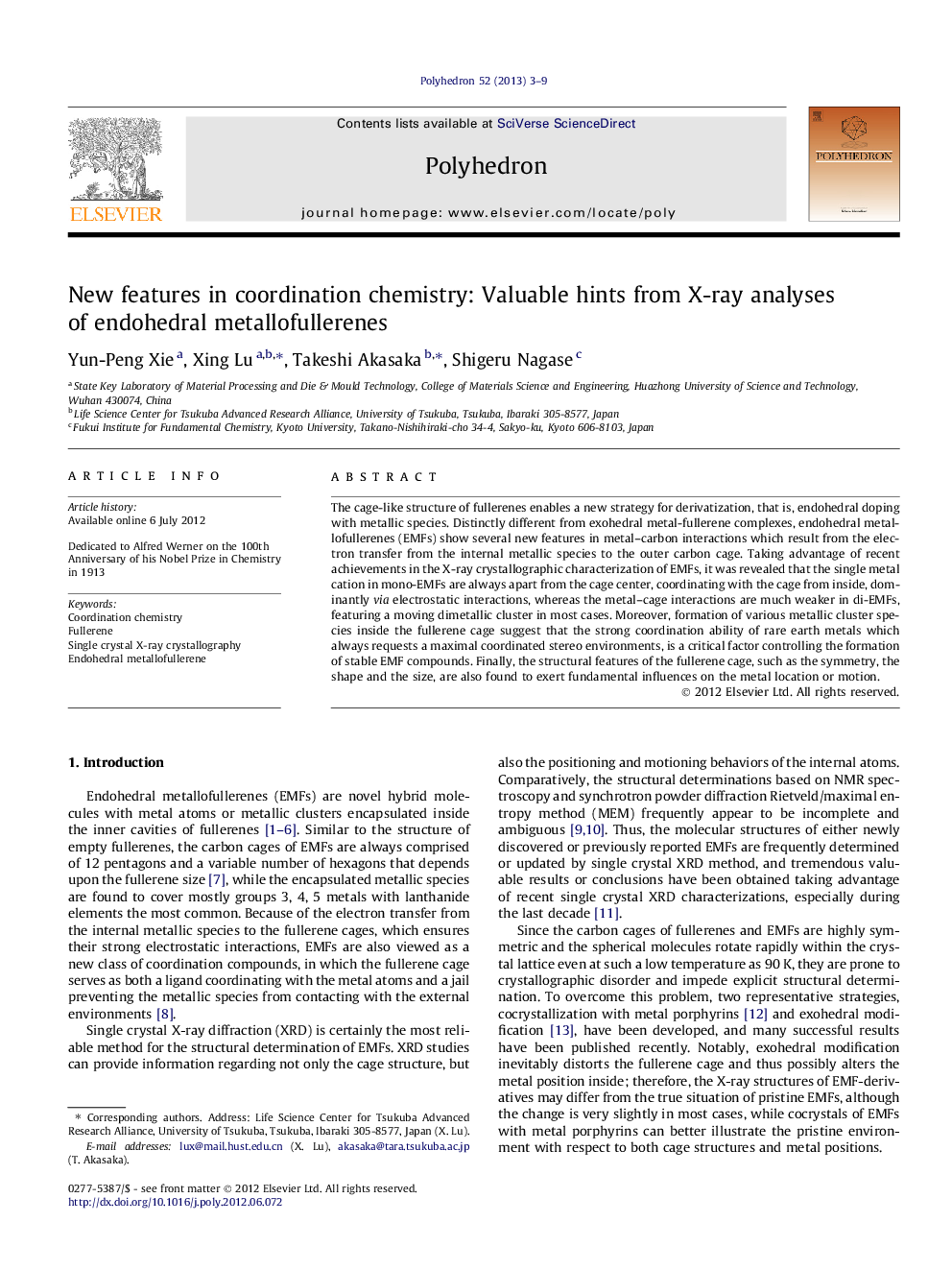| کد مقاله | کد نشریه | سال انتشار | مقاله انگلیسی | نسخه تمام متن |
|---|---|---|---|---|
| 1336917 | 1500287 | 2013 | 7 صفحه PDF | دانلود رایگان |

The cage-like structure of fullerenes enables a new strategy for derivatization, that is, endohedral doping with metallic species. Distinctly different from exohedral metal-fullerene complexes, endohedral metallofullerenes (EMFs) show several new features in metal–carbon interactions which result from the electron transfer from the internal metallic species to the outer carbon cage. Taking advantage of recent achievements in the X-ray crystallographic characterization of EMFs, it was revealed that the single metal cation in mono-EMFs are always apart from the cage center, coordinating with the cage from inside, dominantly via electrostatic interactions, whereas the metal–cage interactions are much weaker in di-EMFs, featuring a moving dimetallic cluster in most cases. Moreover, formation of various metallic cluster species inside the fullerene cage suggest that the strong coordination ability of rare earth metals which always requests a maximal coordinated stereo environments, is a critical factor controlling the formation of stable EMF compounds. Finally, the structural features of the fullerene cage, such as the symmetry, the shape and the size, are also found to exert fundamental influences on the metal location or motion.
Endohedral metallofullerenes (EMFs) are a new collection of hybrid molecules formed by encapsulation of metals inside the hollow fullerene cavities. Recent achievements in the X-ray crystallographic characterizations of both pristine and functionalized EMFs enable accurate estimation of the molecular structures, the metal–cage interactions, and the bonding within the clusters. Since the carbon cage is not only a capsule to incorporate the metal ions or metallic clusters, but it also serves as a ligand to coordinate with the internal metallic species, the metal location and the bonding within the clusters are completely different from the situations in conventional metallic complexes, most probably due to the confined effect of the cage, which adds new concepts into modern coordination chemistry.Figure optionsDownload as PowerPoint slide
Journal: Polyhedron - Volume 52, 22 March 2013, Pages 3–9